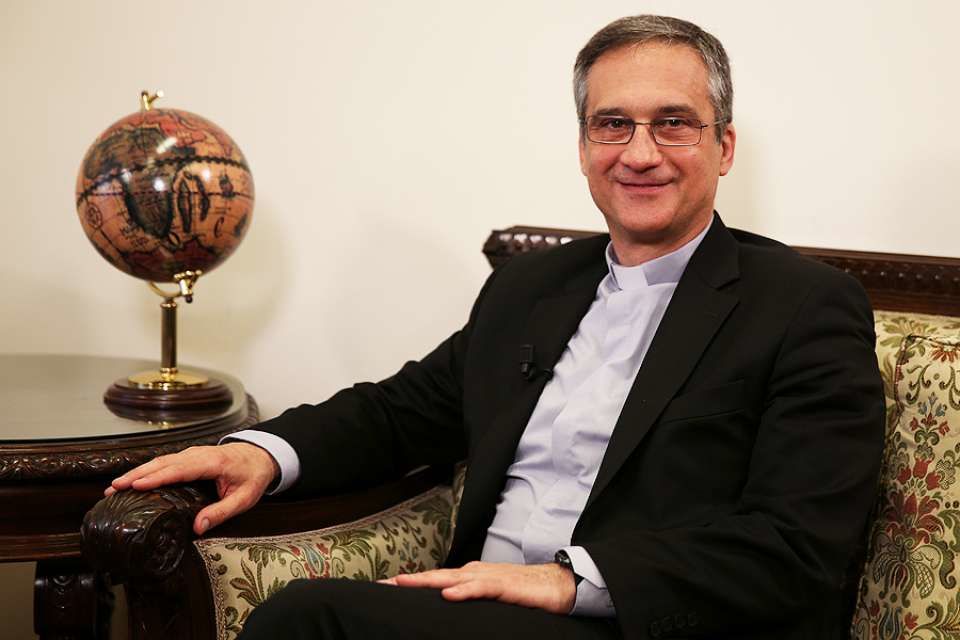Pope Francis and his Council of Cardinals met this week to continue discussions on reform of the Roman Curia and unveiled a new communications system for the Secretariat for Communications.
Taking place at the Vatican Dec. 11-13, all members were present for the meetings, apart from Cardinal George Pell. Pope Francis was present except for Wednesday morning during the general audience, as is ordinary.
Fr. Dario Edoardo Viganò, prefect of the Secretariat for Communications, presented the new communications system, including a new website and logos, during the 22nd round of meetings.
According to a Dec. 13 statement, the “the Vatican media system adopts a new production model based on integration and unified management, in full harmony with the reform desired by Pope Francis.”
The center of the communications system will be new multimedia publishing center, which will present a unified structure for the daily production of content, including audio, text, video, and graphics, in multiple languages.
This system is the result of consolidation on both an economic and technical level, and will be available soon (in a beta version) at vaticannews.va, the press release stated. This replaces the previously used informational websites and aims to streamline the image and channels of communication.
Starting Jan. 1, 2018, the Vatican newspaper L’Osservatore Romano, the Vatican’s photo service, and the Vatican Typography will merge with the secretariat.
It will start with a team of 70 people divided into six language divisions — English, Italian, French, German, Spanish, and Portuguese — in four thematic areas: Pope, Vatican, Church, and world. It will all be overseen by an editorial directorate in coordination with other support groups.
The new system draws its inspiration from the words of Pope Francis to the Secretariat for Communication during their first plenary earlier this year: that “reform is not ‘whitewashing’ things: reform is to give another form to things, organize them in another way.”
Viganò also reported on the final stretch of the reform of Holy See communications, including the achievement of goals to reduce costs and consolidate personnel.
The meetings also included an update from Cardinal Kevin Farrell on the work of the Dicastery for Laity, Family and Life, which is preparing for the 2018 synod on youth.
The cardinals also listened to presentations by Fr. Michael Czerny and Fr. Fabio Baggio, the under-secretaries of the Migrant and Refugee section of the Dicastery for Promoting Integral Human Development.
The section is developing a global strategy to implement in cooperation with the Secretariat of State, bishops’ conferences, NGOs, and religious congregations.
As usual, Cardinal Sean O’Malley also provided an update on the work of the Pontifical Commission for the Protection of Minors.
Members of the commission are appointed for a term of three years, which may be reconfirmed. The terms of the present 15 members of the commission end Dec. 17. Pope Francis will decide whether to reconfirm current members and whom to appoint as new members.
Peter Saunders, founder and former Chief Executive of the National Association for People Abused in Childhood and a member of the commission since Dec. 2014, told the Tablet Dec. 13 he plans to step down from the commission at the end of the week. He has been on a leave of absence from the advisory body since early 2016.
Established by Pope Francis shortly after his pontificate began in 2013, the Council of Cardinals — also known as the “C9” — serves as an advisory body on Church governance and reform, with special emphasis on the reform of Pastor bonus, the apostolic constitution which governs the Roman Curia.
The council’s next round of meetings will take place Feb. 27-29.

